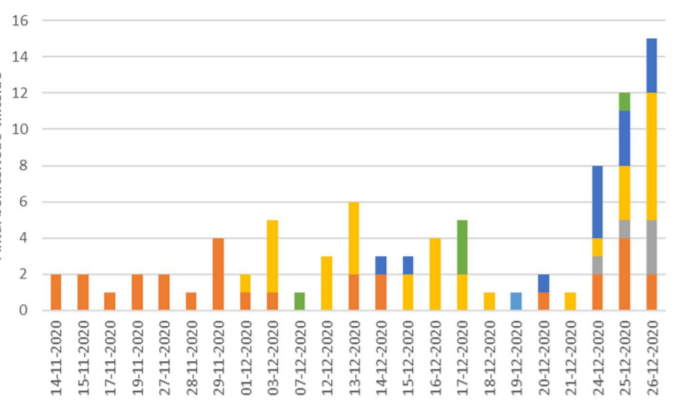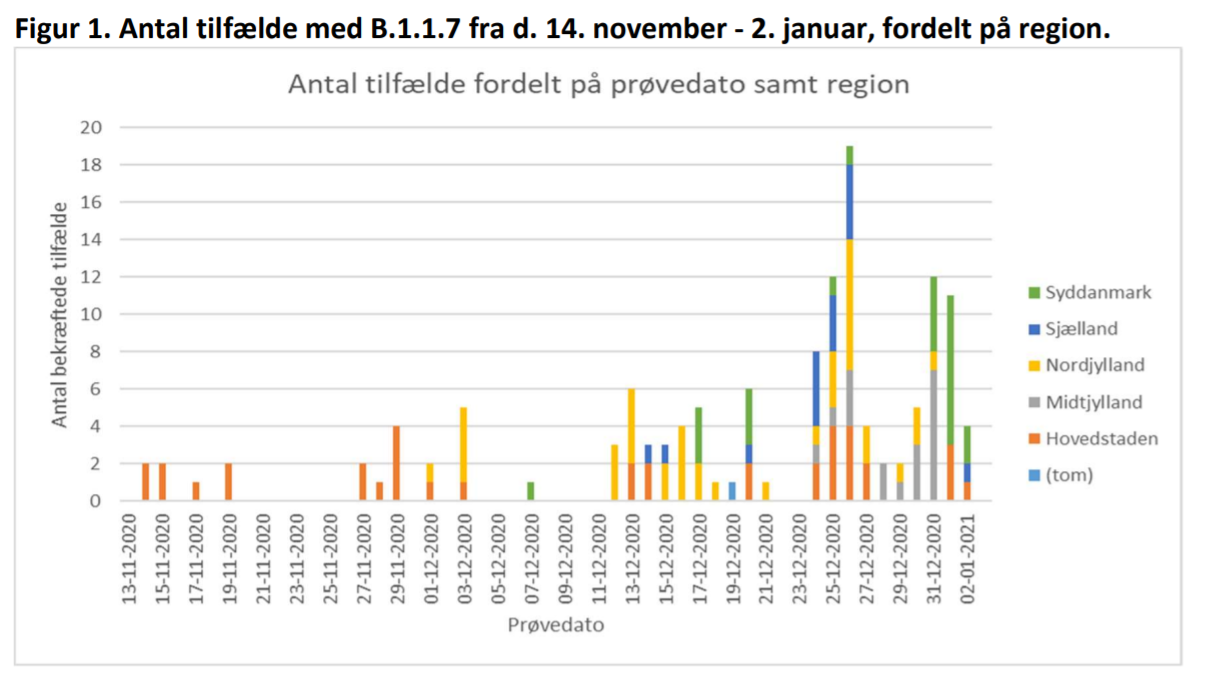Data about the new coronavirus variant (B.1.1.7) from Denmark
post by Oskar Mathiasen (oskar-mathiasen) · 2021-01-02T11:38:35.187Z · LW · GW · 3 commentsContents
3 comments
I noted on Zvi's recent post (found here https://www.lesswrong.com/posts/gbuXXC9KvphmXQFLd/what-evidence-will-tell-us-about-the-new-strain-how-are-you#GxzkzNdYfTLjmQEAm [LW(p) · GW(p)]) that Denmark was one of few other nations to do large amounts of Covid strain sequencing.
This is a followup with the newly released data.
The data seems consistent with a doubling time around a week.

Data found here https://www.ssi.dk/-/media/cdn/files/opdaterede-data-paa-ny-engelsk-virusvariant-sarscov2-cluster-b117--01012021.pdf?la=da

Here is a graph over cases which where tested on specific days, note that days where there where 0 tests sequenced as B.1.1.7 have been skipped
(colors corespond to different areas in Denmark)
3 comments
Comments sorted by top scores.
comment by Oskar Mathiasen (oskar-mathiasen) · 2021-01-09T14:03:27.648Z · LW(p) · GW(p)
Update with new numbers.
In the period from 28-12 to 02-01 we get the following numbers
Positive tests: 14408
sequenced tests: 1261 (8.8%)
B.1.1.7 cases: 36 (2.9%)
Which is slightly slower than a doubleing time of a week (a 1.8 multiplier per week with naive extension (i believe the naive method is likely to underestimate))
↑ comment by Oskar Mathiasen (oskar-mathiasen) · 2021-01-09T14:55:22.973Z · LW(p) · GW(p)
Here is the updated graph

on this one days with 0 cases are not excluded
Worth noting that there doesnt seem to be any significant differences in the ages of people who have the new and old variant
Source https://www.ssi.dk/-/media/cdn/files/notat_engelsk_virusvariant090121.pdf?la=da
comment by blob · 2021-01-06T08:44:57.081Z · LW(p) · GW(p)
This follow-up work is also interesting: https://www.ssi.dk/-/media/cdn/files/scenarier_for_udviklingen_i_den_engelske_virusvariant_af_sars-cov-2.pdf?la=da
They use an agent-based model to extrapolate that the UK variant will reach 50% prevalence in Denmark around 40-50 days after Jan 1.
The model does not account for control loop effects or vaccinations. It says that absent these and with the usual assumptions, Denmark would see a strong peak after 90 days where around 1.4% of the country would be infected at the same time, followed by herd-immunity decline to current infection levels after 180 days.